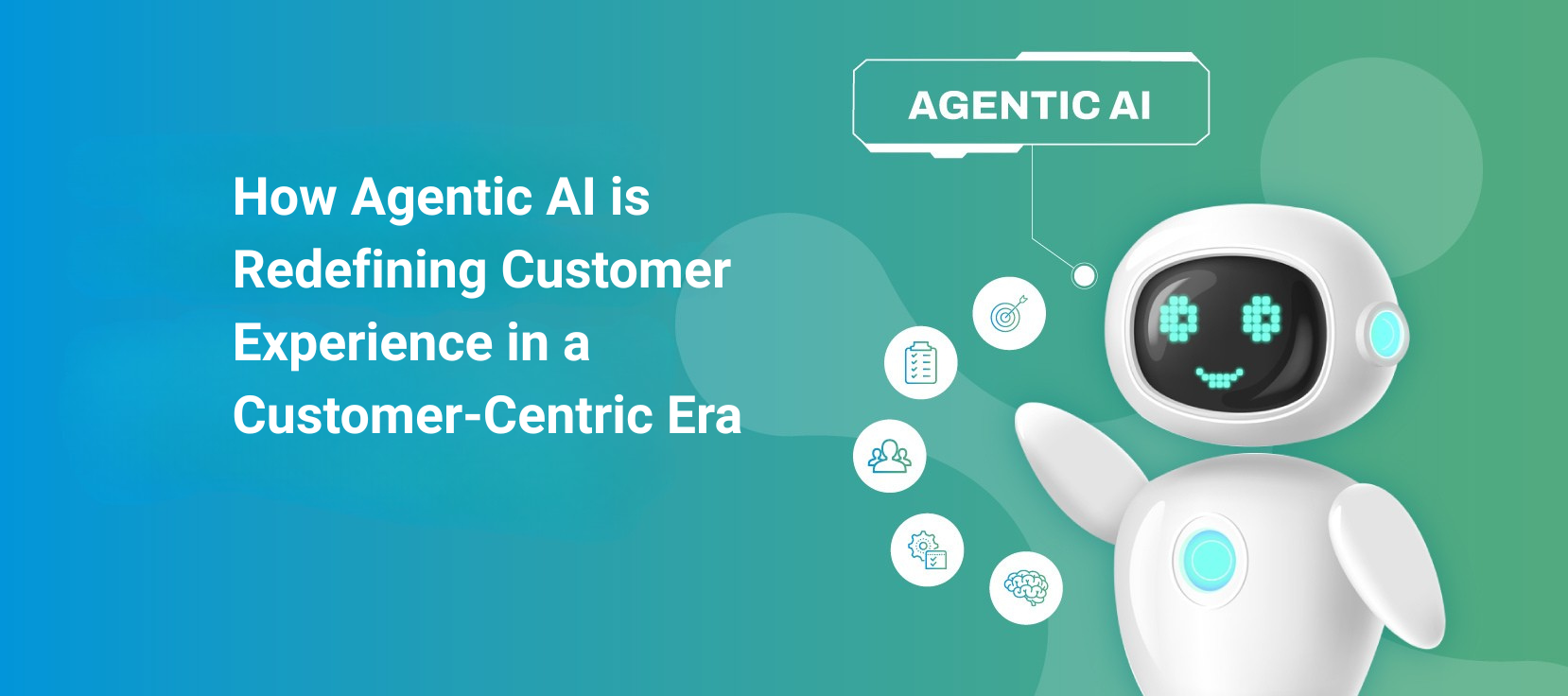
In an age where customer expectations are sky-high, speed is a currency, and personalization is a competitive advantage, businesses are under immense pressure to deliver seamless, intelligent, and proactive customer service. Traditional chatbots and reactive support systems are no longer enough. Enter Agentic AI—a breakthrough technology that is transforming how brands engage, support, and delight their customers.
Agentic AI isn’t just an upgrade to AI—it’s a paradigm shift. It enables machines to autonomously plan, act, and adapt toward complex goals, making them capable of running entire customer service functions with minimal human intervention.
In this article, we’ll explore how Agentic AI is reshaping customer service, how it differs from traditional AI, and why brands that embrace it early will lead the next wave of customer-centric innovation.
What Is Agentic AI and How Is It Different?
While most people are familiar with AI-powered chatbots or virtual assistants, these systems typically function as AI agents—they follow instructions and perform predefined tasks.
Agentic AI, on the other hand, is designed to independently plan and achieve goals. It does not wait for constant user input. Instead, it can:
-
Break down a goal into actionable subtasks
-
Adapt its behavior based on changing circumstances
-
Learn from past interactions
-
Collaborate with other AI systems or humans
According to Andreessen Horowitz (a16z), Agentic AI represents the next wave of artificial intelligence by enabling autonomous workflows, such as solving customer issues from start to finish without human supervision (a16z).
Why the Shift to Agentic AI Matters in Customer Service
1. Customers Expect Instant and Intelligent Responses
According to a report by Zendesk, 72% of customers expect immediate service, and 70% expect anyone they interact with to have full context on previous interactions (Zendesk CX Trends 2023).
Traditional AI can’t meet these expectations on its own. But Agentic AI can:
-
Analyze prior conversations across channels
-
Anticipate the customer’s next need
-
Offer a solution proactively
2. Volume and Complexity of Support Requests Are Growing
The average company handles thousands of support tickets monthly. More than 60% of support queries are repetitive, yet 40% of tickets involve contextual understanding or multi-step processes.
Agentic AI is built for this. Unlike rule-based systems that only understand direct commands, it can:
-
Interpret nuances in customer issues
-
Initiate multi-step solutions autonomously
-
Follow up after resolution to ensure satisfaction
How Agentic AI is Changing Customer Service Operations
✅ 1. End-to-End Case Resolution
Traditional bots assist. Agentic AI resolves.
Imagine a customer contacts a telecom provider about recurring billing issues. Here’s how Agentic AI handles it:
-
Reviews the user’s billing history
-
Identifies the anomaly
-
Cross-checks system logs
-
Issues a refund
-
Notifies the customer via email/SMS
-
Schedules a follow-up survey in 3 days
All of this, without human intervention.
Stat to Note: Businesses that leverage AI in customer service reduce handling times by up to 40% (McKinsey).
✅ 2. Proactive and Predictive Customer Engagement
Agentic AI doesn’t wait for customers to raise issues. It monitors interactions, predicts dissatisfaction, and acts before a problem escalates.
For instance:
-
An e-commerce platform can use Agentic AI to detect frequent returns from a specific buyer and trigger proactive outreach.
-
A SaaS company can identify users struggling with a feature and offer real-time guidance before a support ticket is even raised.
According to Accenture, 91% of customers are more likely to shop with brands that recognize and remember them and provide relevant recommendations (Accenture Personalization Report).
✅ 3. Personalized, Human-Like Interactions at Scale
Customers hate robotic replies. Agentic AI uses advanced NLP and context-awareness to sound more human, while also adjusting its tone and messaging based on the customer’s mood and profile.
-
A frustrated customer? It adopts a calm, empathetic tone.
-
A returning VIP customer? It offers personalized rewards and escalates priority.
This level of emotional intelligence has traditionally been limited to human agents—but not anymore.
✅ 4. Reduced Burnout for Human Support Teams
One of the less-discussed benefits of Agentic AI is employee well-being. Support teams face high turnover and burnout, especially when overwhelmed by repetitive tickets.
Agentic AI frees up human agents to focus on high-value interactions and strategic problem-solving, improving job satisfaction and customer outcomes alike.
Gallup reports that employee burnout accounts for $322 billion in lost productivity globally (Gallup Workplace Study).
Industries Already Using Agentic AI in Customer Service
-
Banking & FinTech: Handling fraud detection, customer onboarding, and dispute resolution autonomously.
-
E-commerce: Managing returns, cancellations, and delivery queries without human escalation.
-
Telecommunications: Troubleshooting network issues, upgrading plans, and billing clarifications.
-
Healthcare: Scheduling appointments, providing follow-up care information, and insurance claims resolution.
Top Tools and Platforms Embracing Agentic AI
Several emerging platforms are building Agentic AI capabilities into their customer service stack:
-
LangChain: Enables the development of autonomous AI workflows for customer-facing applications.
-
AutoGPT: An open-source project pushing the limits of self-prompting and task completion.
-
OpenAI’s GPT-4 with Tools: Allows models to browse, execute code, and take actions across APIs for agent-like behavior.
These platforms signal the shift toward AI agents that don’t just talk—but act.
Challenges of Deploying Agentic AI in Customer Service
While the promise is high, brands must proceed thoughtfully.
⚠️ 1. Data Privacy and Compliance
Agentic AI needs access to sensitive data. Organizations must ensure compliance with GDPR, CCPA, and other data protection laws.
⚠️ 2. Explainability and Transparency
Customers and regulators alike will demand to know: Why did the AI make that decision? Businesses must invest in AI explainability frameworks.
⚠️ 3. Ethical Use and Bias
Poorly trained agentic systems can make biased or inappropriate decisions. Continuous auditing, diverse datasets, and human oversight are essential.
The Future of Customer Service with Agentic AI
Agentic AI will be the backbone of autonomous, empathetic, and hyper-personalized customer service.
Here’s what we can expect in the next 3–5 years:
-
AI Customer Success Managers that manage relationships end-to-end
-
Multi-agent systems that coordinate across departments (support, sales, IT)
-
Hyper-contextual support where customers are never asked the same thing twice
-
24/7 autonomous service that resolves issues instantly—at scale
As businesses increasingly move toward AI-driven operations, those who harness the power of Agentic AI early will enjoy cost savings, happier customers, and competitive dominance.
Conclusion
In today’s customer-first economy, reactive support isn’t enough. Customers want speed, personalization, and proactivity—and they want it 24/7.
Agentic AI delivers all three, not as a support tool, but as a full-fledged autonomous service agent. From reducing resolution times to elevating customer experiences, Agentic AI is not just an innovation—it’s a transformation.
For forward-thinking companies, the message is clear: Agentic AI isn’t the future of customer service. It’s the present.

